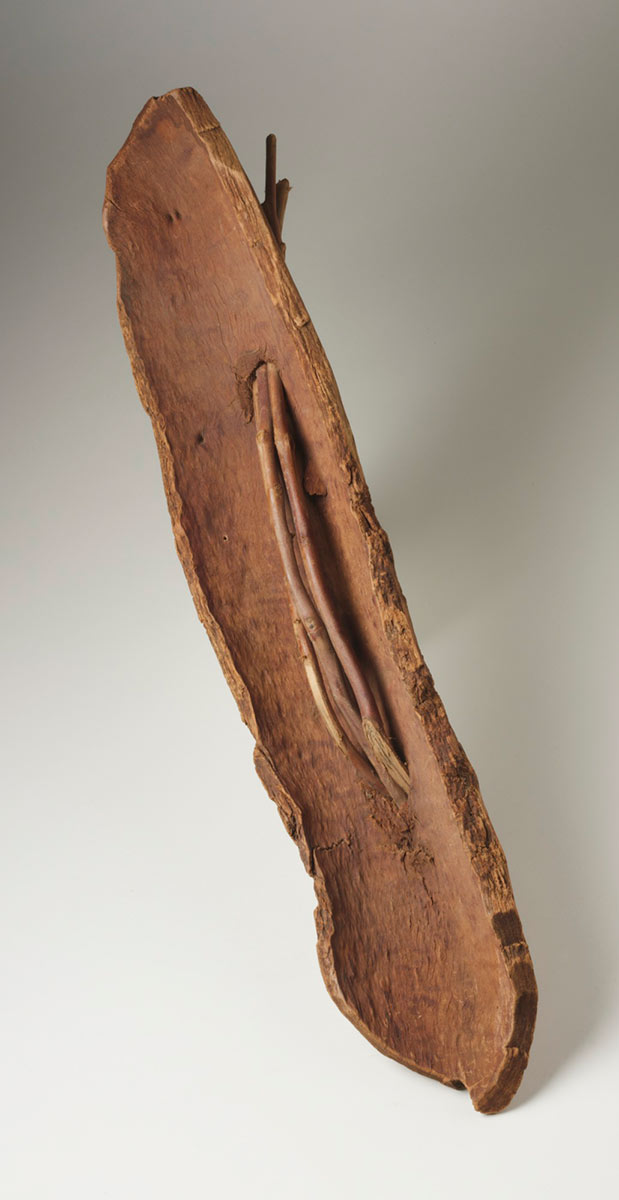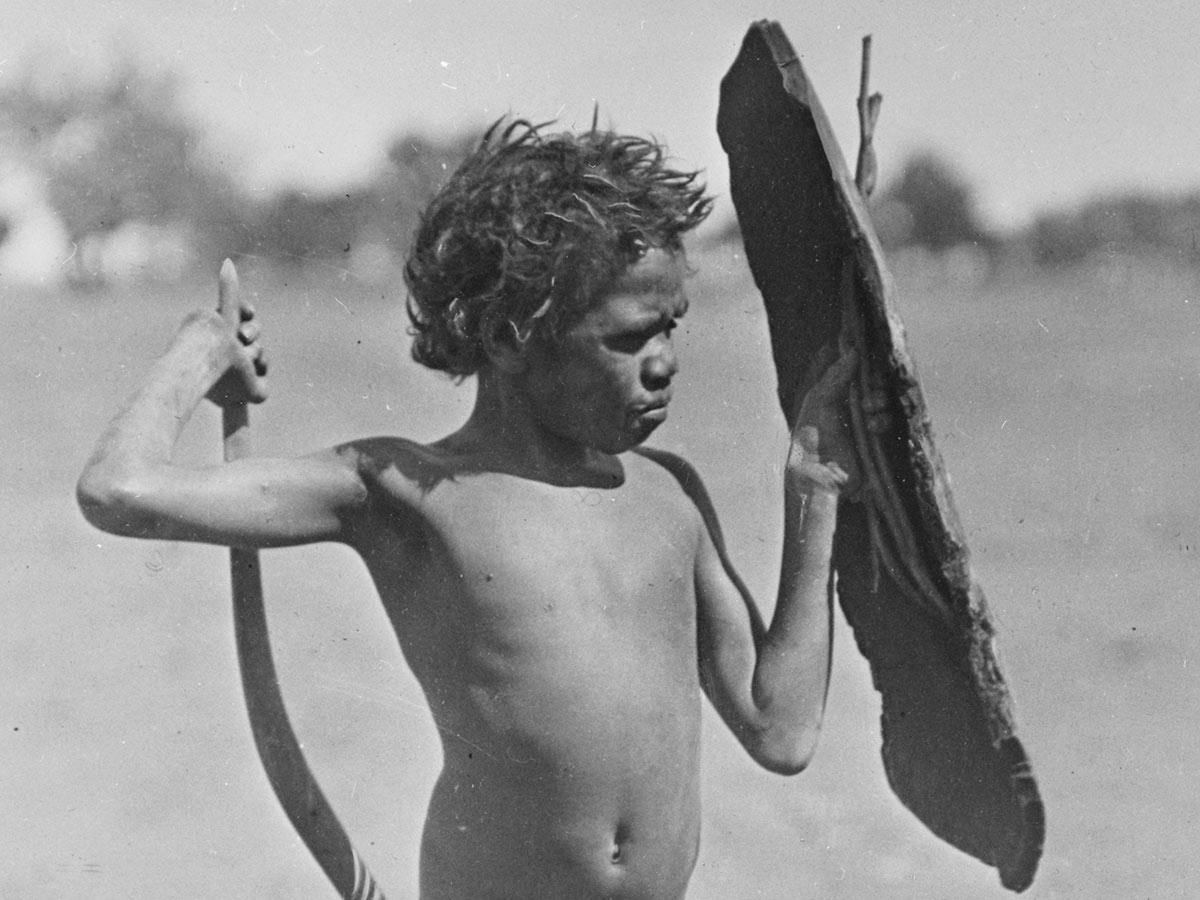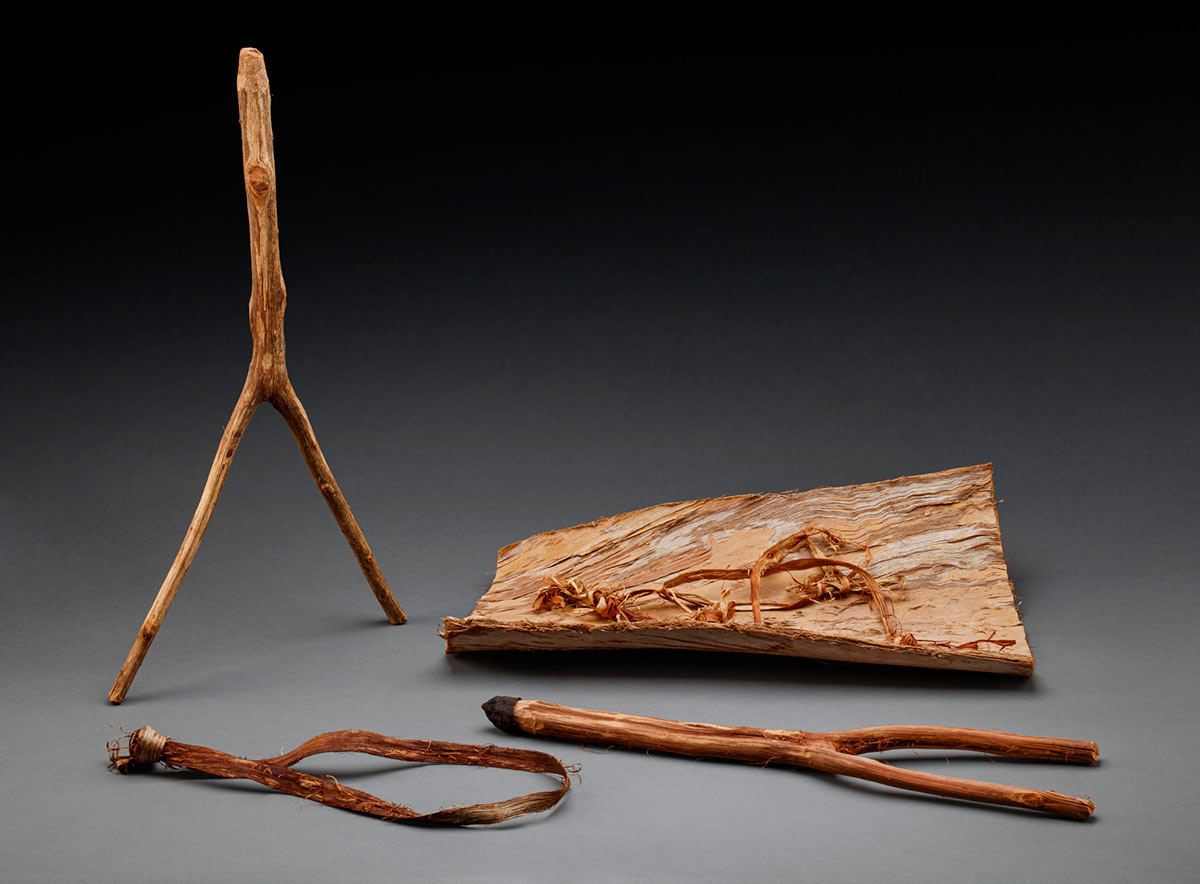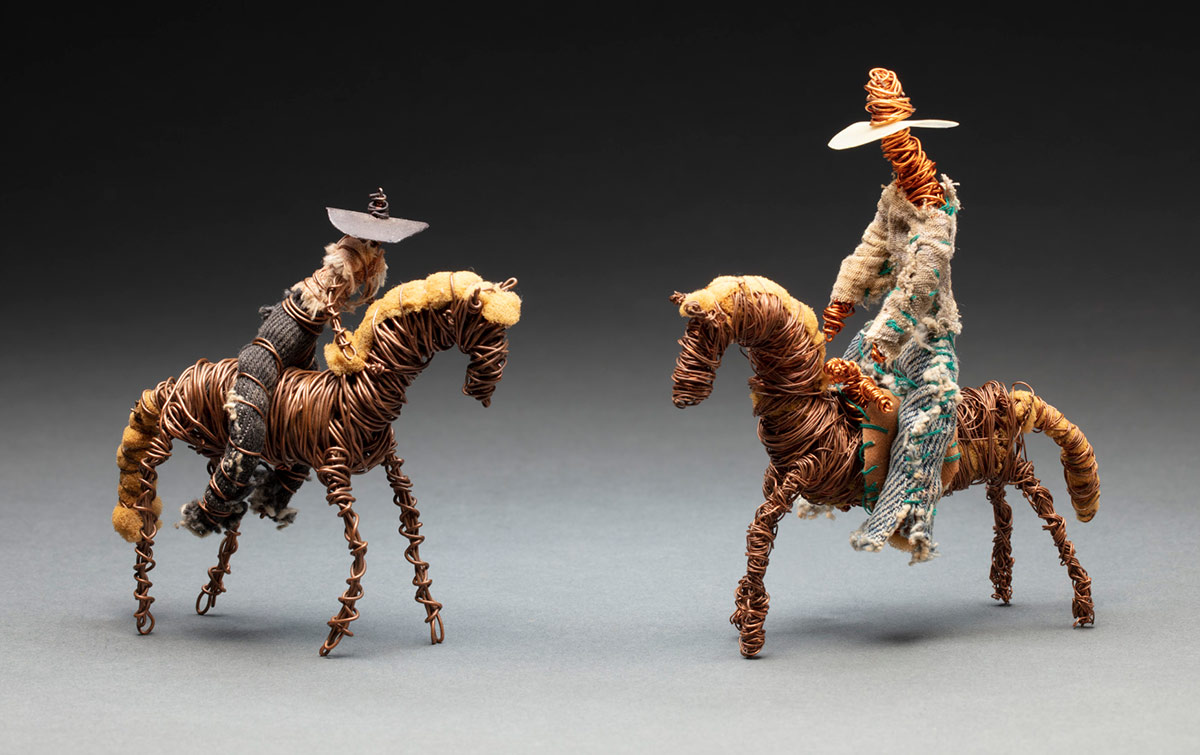Children living in the bush had ingenious ways of making toys from found materials.
Arrernte boy’s shield, 1920s
Herbert Basedow, The Australian Aboriginal, 1925:
[Boys] are instructed in the knacks and arts of handling and throwing weapons of chase, attack, and defence. The lads take to this instruction enthusiastically.
This toy shield belonged to an Arrernte boy, aged about 5 years, who lived near Oodnadatta in South Australia during the early 1920s. We have no record of his name.
Simplified shields like this were prized by Arrernte boys, who used them in play to deflect toy spears and other missiles. These games of skill and agility prepared them for hunting and ceremonial fighting as initiated men.
Scientist Herbert Basedow collected this shield at Todmorden Station and photographed members of the community during one of his expeditions in the 1920s.
Thelma’s dolls, 1990s
Thelma Walwalmara Douglas, 1992:
Long time ago baby, find that pandanus [with] two legs. We used to cut it and use that for baby.
These dolls and this paperbark coolamon were made in 1993 by Thelma Walwalmara Douglas. Born in about 1945, Thelma grew up in Borroloola in Yanyuwa Country in the Northern Territory. She made these replicas of objects she had played with as a child, ‘before whitefella toys come’.
Playing games was central to camp life during Thelma’s childhood. Re-enacting adults’ activities was a way of understanding future responsibilities and relationships. Thelma recalled that she and her friends had played with dolls like these, putting the baby to sleep, sheltered by a windbreak, cooking them meals and carrying them while hunting for goannas.
Tristan’s horses and cowboys, 1990s
Liesl Rockchild, Bush Toys, 1999:
Arrernte art and culture are one, they go hand in hand.
These horses and cowboys were made by Tristan Young, a 10-year-old Eastern Arrernte boy living in Ltyentye Apurte in the Northern Territory.
Eastern Arrernte men and boys play a major role in station life. Their knowledge of cattle, horses, tools and clothing is reflected in their artwork and toys. When playing with figures like these, children might create an entire cattle station, complete with a homestead, animals and a stockyard.
Tristan began making wire toys when he was 8 years old. Like other artists in his community, he repurposed discarded household objects and salvaged wire, textiles and plastics from the tip.
Explore more Play
You may also like



